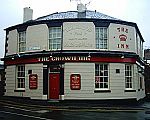Meersbrook
Meersbrook (grid reference SK354841) is a suburban district in the south-west of Sheffield, England bordered by Nether Edge to the west, Norton Lees to the south, Heeley to the north and the Meersbrook allotment site (the largest allotment site in Europe) to the east. Until 1950 it was part of the Sheffield Ecclesall constituency and now forms part of the Sheffield Heeley constituency. The district falls within the Gleadless Valley ward of the city. The name comes from the stream, the Meers Brook, a tributary of the River Sheaf which means 'boundary brook' and in ancient times this, along with the River Sheaf formed the boundary between the Anglo-Saxon kingdoms of Northumbria and Mercia. It remained as the boundary between Yorkshire and Derbyshire into the 20th century. Meersbrook itself was once several small communities which have given many roads their names; Rush Dale, Carfield & Cliffe Field and in 1857 was known as Mears Brook. Due to its proximity to the city centre and a thriving independent cafe, bar and restaurant culture, Meersbrook has been called 'a magnet for young professionals'. Based on 2021 census data, Meersbrook is the thirteenth least deprived of the hundred neighbourhoods in Sheffield in relation to employment, education levels, health and housing.
Excerpt from the Wikipedia article Meersbrook (License: CC BY-SA 3.0, Authors).Meersbrook
Burnside Avenue, Sheffield Meersbrook
Geographical coordinates (GPS) Address Nearby Places Show on map
Geographical coordinates (GPS)
| Latitude | Longitude |
|---|---|
| N 53.353 ° | E -1.47 ° |
Address
Burnside Avenue 5-23
S8 9FR Sheffield, Meersbrook
England, United Kingdom
Open on Google Maps









